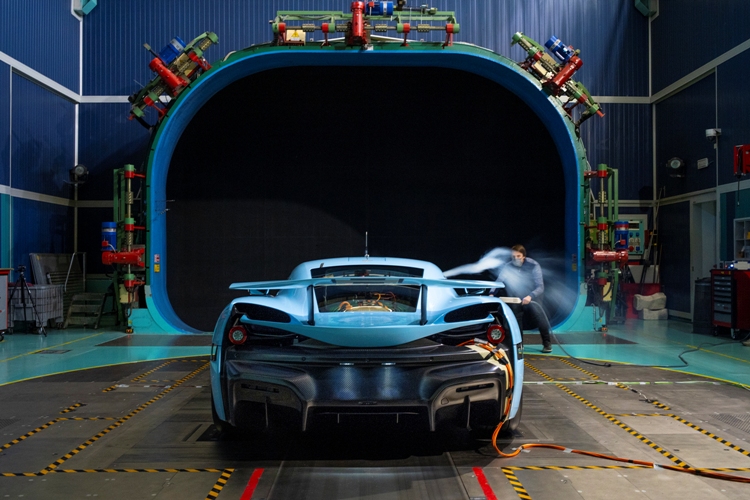The Croatian Rimac C_Two sports car is put through wind tunnel testing to enable final design optimisation for efficiency
During the last two years, different generations of the Rima C_Two prototypes electric sports car have been put through a series of wind tunnel tests. The objective of the test programme is to ensure that the aerodynamics perform at the optimum level in terms of performance, range and efficiency when it comes to handling the impact of wind under different driving conditions.
The engineering team at the Croatian company ran thousands of CFD simulations for the C_Two, with each simulation model consisting of over 120 million elements with up to 180 million for the detailed heat transfer models. With real-time testing, it is critical to validate expected results. For this reason, the real-time tests were conducted in a controlled wind tunnel testing environment and on the track.
During the tests, Rimac engineers assessed the car against three fundamental aspects: car efficiency, cooling performance and active aerodynamic systems. All of these are particularly important for an electric car, moreso than for a traditional internal combustion-engined one. For example, on long-distance trips, the demands for cooling will naturally be lower than when the C_Two is being driven on the track. At the same time, ensuring optimum range from its batteries and the car’s overall ability to fully harness its immense power and torque is also key.
The car’s aerodynamics play a key role in this regard. The C_Two has been carefully designed and engineered with this element firmly in mind. The C_Two has four specific active aerodynamic parts. Everything from the active front splitter and intelligent underbody air flaps to the adaptable air brake wing prove the C_Two is shaped for performance.
The tests have all already gone extremely well in terms of correlation with the CFD simulations. From the initial C_Two concept to the validation prototype, as a result of continuous optimisation, aerodynamic efficiency has been improved by 34%.

